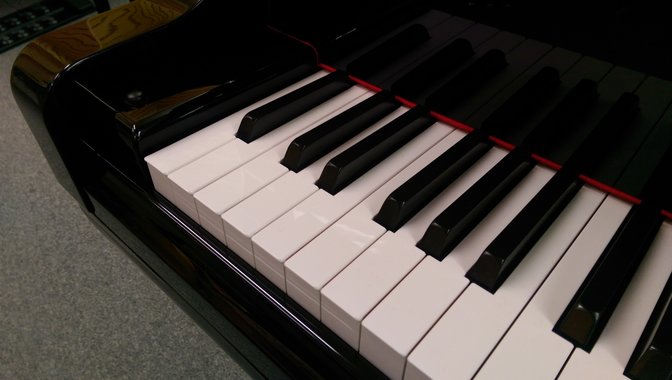Let’s talk about how to learn the order of flats in music. But first, what exactly are flats?
![]()
The Italian word “bemolle” means to lower in pitch. That’s where the flat symbol which is a lower case b is derived from. When you flat a note, you’re lowering it a semi-tone, otherwise known as a half step.
Our trusty friend, the key signature is an invaluable source of information to tell us what notes in a key of music are to be lowered. Even if you don’t necessarily play from written music, you’re still utilizing a key signature to guide you within a piece of music. But it’s likely that you will at some time play at the very least from a lead sheet which has chord symbols, a simple melody and also a key signature. That’s why it’s important to know how learn the order of flats in music.
A key signature is a specific sequence of flats or sharps placed on a musical staff. You’ll find it to the very right of the treble clef. The sharps and flats are always in the same order. They also maintain the exact same sequence. Sharps & flats are never mixed together. It’s either specifically sharps or specifically flats: period.
I want to emphasize the last sentence of the last paragraph. Don’t mix sharps and flats as it’s related to keys of music. In order to maintain consistency with the anatomy of music, (I didn’t use the word theory that
time) it’s important to avoid confusion and deviation from musical concepts.
Here’s a simple analogy. If I refer to a motorcycle as a bike like many people do, it’s acceptable and a motorcyclist is likely to understand the word bike in the context of motorcycles. But if I’m chatting with someone and I urge him to ride his bike on the North American highway because he’ll get to his destination a lot faster, it could be a disaster. The busiest highway in the world is not the place to ride a bicycle. But it’s more likely to just cause confusion.
If you want your understanding of music to be consistent and congruent with other musicians, then you should avoid that kind of confusion.
So, what does a key signature actually do? It tells us throughout the music whether one or more of the alphabetic notes in music are to be raised or lowered (depending whether there are sharps or flats in the key signature). I’ll cover more on the alphabetic representation of notes in just a moment. In other words, whenever you come across those specific notes that are listed in the key signature, you’ll play them sharp or flat as the key signature dictates you to do so. 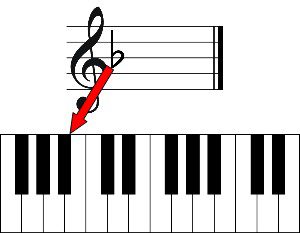
For example, if there’s an B flat in the key signature, every time a B comes across the page, you’re to play that note down one half a step. AKA playing the note flat. You will of course play more flatted notes as more flats appear in the key signature.
It’s not difficult to learn the order of flats in music but I’ve found that when aspiring musicians don’t have a solid grasp of them, it’ because they simply haven’t taken the time to learn them. I want to help you with that today.
The first concept to understand about flats is that all flats in the key signature progress in the same order. Whenever you have a specific number of flats in a song, they’re actually the same ones in the same order every time you encounter them.
For example, if you only have one flat in the key signature, it’s B flat always. If you have two flats, it’s B flat and E flat every time.
Today we’re going to be covering the order of flats in music. But before we do, I need to just briefly explain how I’m presenting these flats on the staff. As you can see, each flat is represented with a different color. These colors are simple tools used in the Color Score Visual Chord System. You don’t have to understand how it works in order to understand this article. Just know that each flat has a different color to distinguish it from one another. 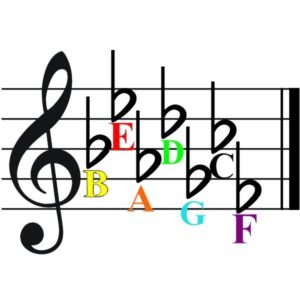 In music, the first 7 letters of the alphabet represent every note in a key of music regardless of whether it is a Major or a minor key. This means that regardless of the number of flats or sharps your have, you’ll always have an A,B,C,D,E,F AND G within every key of music.
In music, the first 7 letters of the alphabet represent every note in a key of music regardless of whether it is a Major or a minor key. This means that regardless of the number of flats or sharps your have, you’ll always have an A,B,C,D,E,F AND G within every key of music.
It depends upon the key to whether any one of those notes have a flat or sharp to accompany it. But you’ll certainly have all 7 lettered notes within the key. You never skip a letter or have the same one twice.
If you’re not familiar with the notes on the staff or the notes on the piano, it’s going to be very difficult for you to learn the order of the flats. However basic this seems to be, not everyone has a good grasp of written notes on the staff so here they are.

Here’s the order of flats in music: B, E, A, D, G, C & F. (7 flats)  As the number of flats increase in the key signature, a new key is represented. Each key of music is specific to the number of flats. They’re always in the same order and they’re never mixed with sharps.
As the number of flats increase in the key signature, a new key is represented. Each key of music is specific to the number of flats. They’re always in the same order and they’re never mixed with sharps.
Even though Major keys are represented by a specified numbers of flats, minor keys share the same flats as their Major counterparts. For example, three flats in the key signature signify the key of E flat Major but it’s also C minor. I’ll save the details of Major and minor keys for a later post.
Now let’s put the order of flats into a visual context by placing them in sequence on the staff.
The order of flats as they appear in context…
Bb (the key of F Major)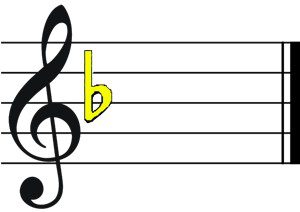
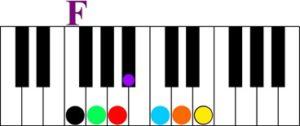
Bb & Eb (the key of Bb Major)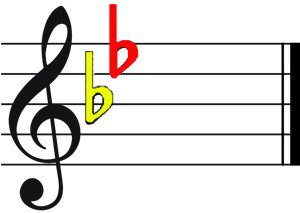
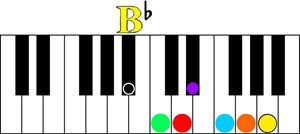
Bb, Eb & Ab (the key of Eb Major)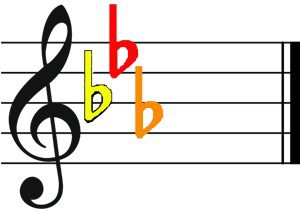
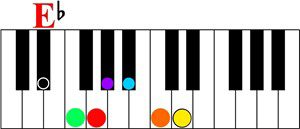
Bb, Eb, Ab & Db (the key of Ab Major)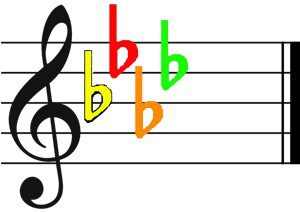
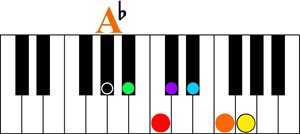
Bb, Eb, Ab, Db & Gb (the key of Db Major)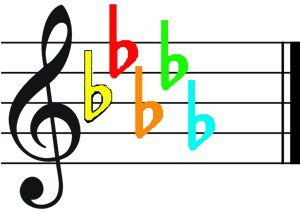
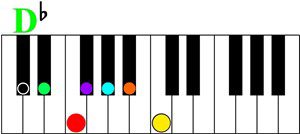
Bb, Eb, Ab, Db, Gb & Cb (the key of Gb Major)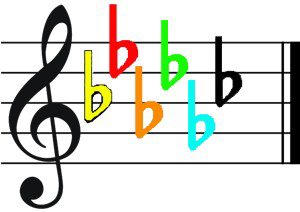
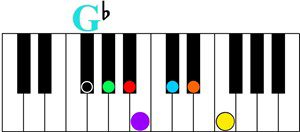
Bb, Eb, Ab, Db, Gb, Cb & Fb (the key of Cb Major)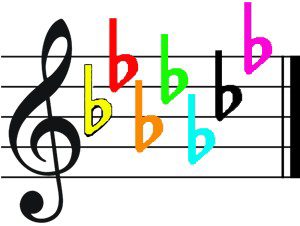
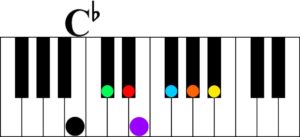
As you can see, 7 flats is the maximum amount of flats that you can have in a key of music.
Thank goodness that flats are never jumbled up in just any old order or the world of reading or even playing music for that matter would be very difficult for us musicians.
So what’s the simplest way to learn the order of flats in music?
Notice that the order of the flats actually spell out a word. BEAD. So it’s quite obvious that you can remember the order of the flats just by remembering the word BEAD. The remaining three letters (G C F) can be memorized just by simply creating an acronym. How about “go catch fish” or “go crazy fighting”? While you’re at it, create your own. Just make it memorable!
That’s it! You now know how to learn the order of flats in music. But if you want to cement the order of flats into your brain, download this How To Learn the Order of flats in Music instructional guide from learncolorpiano.com. It’s a free resource and my gift to you for reading this article.

Find out more about Color Score! The visual way to learn how to play the piano like a professional.
Until next time, Go Play!
Greg Lee
Latest posts by Greg Lee (see all)
- What is a minor/Major 7 Chord? - October 26, 2023
- 7 Chord Substitutions that Professionals Use - October 19, 2023
- 5 Simple Chord Tricks to Sound Amazing - October 5, 2023

